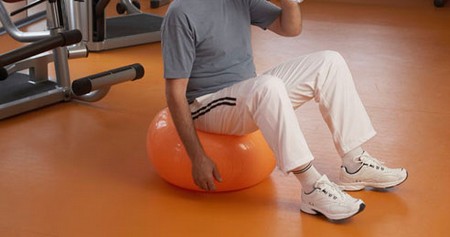Many people hate the word “exercise.” It conjures up images of sweat-soaked young women—with great figures, skin-tight leotards, and pert little ponytails—prancing around a mirrored room to loud music. Or it brings to mind muscle-bound studs lifting hundreds of pounds of weight—sweaty and grunting. You may think of neighbors you see pounding the pavement as they run their six miles before breakfast, looking grim and determined.
If you share this aversion to exercise, you may think you’ll never be able to do something like that. Just thinking about it may be so exhausting that you collapse onto the couch and continue your imitation of a potato. Well, you don’t have to go to these extremes. Only a small minority of Americans are fanatic exercisers (but we all have the shoes for it!).

But you are going to get off the couch and start moving.
Exercise means physical activity, and the more physical you are, the more calories you burn—and the better you are at keeping your blood glucose in control. But exercise is not only jogging or playing tennis or doing push-ups. It’s cleaning the house, raking leaves, mowing the lawn, pulling weeds, walking to work, maintaining your sailboat, bicycling to the grocery store.
Every time you move a muscle (even changing positions in bed at night), your body uses energy. Energy is calories. The more muscles you move and the longer you move them, the more energy your body requires, and the more calories you burn.
Exercise recommendations for diabetics used to be fairly rigid: thirty to forty minutes of moderate exercise three or four times a week. However, new medical evidence shows that physical activity can be just as beneficial if it is mild to moderate but done for shorter periods of time every day of the week. This is good news because one of the major excuses people use for not exercising is lack of time.
However, this doesn’t mean that you should not do moderate or intense exercise for longer periods of time as well as shorter stints of physical activity. In fact, the more you exercise (short of hurting yourself or running yourself into the ground from exhaustion), the better off you will be.
Vivian sees exercise as her medication and controls her Type II diabetes with a food plan and exercise alone. She never goes more than two days without her “medicine.”
Vivian varies her types of exercise because she gets bored doing the same thing every day. Two or three days a week, she goes to an aerobics class with two women from her office, and other days she lifts weights, walks in a park that has many trails so she can vary her route, uses a treadmill in her basement, and works out with Jane Fonda and Richard Simmons tapes.
Vivian does many kinds of physical activity cheerfully. When she got diabetes, she paid more attention to what she was doing and how often; she wants to see how long she can control her diabetes without having to take drugs. So far, so good. She has had diabetes for eight years. She looks good, feels great, and keeps her blood glucose on an even keel.